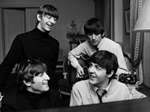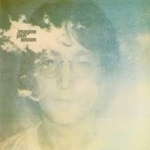- Register
- Log in to Tune-In
- Wishlist (0)
-
Shopping cart
(0)
You have no items in your shopping cart.
Beatles News

The Beatles were masterful songwriters, composers, musicians, and singers. Their library of music is rich with tricks and techniques that captured the ears (and hearts) of their fans then and now. Their compositions and recordings remain relevant decades later. “Help!” was released in July 1965 and became The Beatles’ 10th overall #1 single. It came out after “Eight Days A Week” in February in the US and after “Ticket to Ride,” which was released in April of that same year, continuing the relentless march of Number 1 singles that the Beatles released in a short window of time.
Source: Michael Massetti/culturesonar.com
details
After The Beatles arrived in America with “I Want to Hold Your Hand” at No. 1 and screaming fans everywhere, “Beatlemania” officially kicked into gear. In the following years, the band would rack up one chart-topping hit after another (including six in 1964) and dominate the music scene.
When the band played to 56,000 fans at Shea Stadium in August ’65, it might have been the peak of Beatlemania. By the following year, they were singing about the “Nowhere Man” inside them and some “Day Tripper” who turned up at their flat. They had more on their mind than holding hands.
And in ’66 the Fab Four quit touring for good. After an ugly experience in the Philippines and the realization that their live shows sounded terrible, the band decided to pack it in following its last hurrah in San Francisco that August.
Source: cheatsheet.com
details
Early in 1964, as Beatlemania swept the world, newspaper headlines announced that The Beatles would be travelling to South America later that year. Millions awaited their arrival with bated breath – and in July, when four young moptops descended into Buenos Aires Airport, it seemed that teenage dreams were about to come true.
The Beatles were actually nowhere near Argentina at the time. The British group – who split 50 years ago this month – were back home in London, on a rare rest stop between concerts and recording. But with or without their knowledge, four young guys from Florida named Tom, Vic, Bill and Dave had taken their place.
There had been a terrible mix-up.
Source: Ed Prideaux/bbc.com
details
Paul McCartney is without a doubt one of the greatest, if not the greatest, musicians in the history of music. McCartney gained notoriety in the 1960s when he and Ringo Starr, George Harrison, and John Lennon created The Beatles, a band that will remain the best of all time.
As a member of The Beatles, McCartney wrote and produced a number of hit songs for the group, that is until his departure 10 years later in 1970. Despite leaving The Beatles, Paul McCartney found even more success as a solo artist, scoring a number of Hot 100 number ones and albums.
After proving himself to be one of the best there is, the singer has been honoured with a number of awards and titles that only very few people have been given. From being a member of the hottest band in the world to a super successful solo career, here are 13 of Paul McCartney's most memorable achievements.
Source: Michael Chaar/thethings.com
details
Reading about the Fab Four and the current unprecedented times we live in all blend together for me
Be not surprised that something deep inside of you starts playing with your mind in this lockdown. I know I’m back at the beginning of time, the 1950s. Back then we were always running out of milk, bread, tea, margarine – butter on Saturday and Sunday – and eggs. And now it’s the first thing I think of when I wake. Have we got enough of the above, the staples of my diet?
Yes, my diet is my prime concern. It’s also a variation on the ‘first up, best dressed’ thinking where you got choice if you were first on the scene. The sooner you arrived for breakfast the more you had of the disappearing eggs, marge and bread, and the mugs of tea.
I am irritating those around me who share my lockdown. I feel as if I’ve turned into one of the old blokes in The Vicar of Dibley, which I still enjoy constant repetitions of, with its characters’ repetitious behaviour.
Source: John Bird@johnbirdswords/bigissue.com

Paul McCartney and John Lennon became wrapped up in a bitter feud following the latter’s decision to quit the band back in 1969. Lennon shocked the rest of The Beatles when, one day, he made the announcement out of the blue in a meeting. It was decided they would keep the move under wraps while they ironed out some business complications but it wasn’t long before the news was out.
The following year, McCartney took it upon himself to tell fans The Beatles were no more when he launched his first solo album.
This left Lennon irritated he hadn’t used the band’s break-up to his own advantage for publicity.
After the Fab Four’s demise, the former bandmates went their separate ways.
Source: Minnie Wright/express.co.uk
details
If you ask any Beatles fan what they believe that The Fab Four’s finest song is you are likely to get a different answer from one day to the next. However, Ringo Starr is adamant about his favourite and it is a rarity that you wouldn’t expect.
The Beatles were well and truly in their pomp by 1966 and had become an unstoppable force in the charts but, on a creative level, they began experimenting even further. On the eternally adored Revolver they kicked it up a notch and the album remains a high watermark even by their lofty standards.
These sessions from the time of the album would spurn the one recording which Ringo would classify as being the band’s magnum opus. However, the track would never even make it onto the record. ‘Paperback Writer‘ was another gem by The Beatles which somehow didn’t make it on to a full-length album and, instead, was released as a stand-alone release in May 1966. The track would act as the B-Side for Ringo’s favourite Beatles song, the best they ever created, ‘Rain’.
Source: Joe Taysom/faroutmagazine.co.uk
details
“Paul is quitting The Beatles” screamed the headlines in the Daily Mirror.
In a press statement sent out to promote his new solo album, ‘McCartney’, Paul was asked: “Is your break with the Beatles temporary or permanent, due to personal differences or musical one?”
“Personal differences, business differences, musical differences, but most of all because I have better time with my family. Temporary or permanent? I don’t really know.”
“Do you foresee a time when Lennon-McCartney becomes an active songwriting partnership again?”
“No.”
The Daily Mirror interpreted Paul McCartney’s answers to mean that The Beatles as a cohesive working unit were beyond redemption.
It’s often said that the killing of Meredith Hunter at a Rolling Stones concert held in Altamont in 1969 was the end of the sixties but for many Beatles fans the world over the Daily Mirror headline was the real death knell of the decade.
Source: thestar.co.uk
details
While he was in The Beatles, John Lennon started getting annoyed by wild interpretations of his songs. And on The White Album, John had something of a response for those he thought were reading too much into his music. It arrived in the form of “Glass Onion.”
On that track, he decided to throw people for a loop by saying “the walrus was Paul [McCartney].” And it worked. “I was having a laugh because there’d been so much gobbledegook about Pepper,” John said in Beatles Anthology. “Play it backwards and you stand on your head and all that.”
With that comment, John referenced various hubbubs, from people pointing out the initials of “Lucy in the Sky With Diamonds” (LSD) to the sounds at the end of “I Am the Walrus.” (People heard “everybody smoke pot” rather than “everybody has one” on “Walrus.”)
Meanwhile, John also couldn’t help but laugh at how people heard sounds at the end of “Strawberry Fields Forever.” On that early ’67 masterpiece, the final section included some distorted words people took in a way he hadn’t intended.
Source: cheatsheet.com

John Lennon, Paul McCartney and George Harrison, while writing songs for The Beatles, all were able to brilliantly synthesize what was happening in their culture and the musical currency of the day with their own ingenious new directions in songwriting.
But what songs then had the most impact on them, and directly influenced their songwriting to shape their miraculous catalog? Let’s take a look, beginning at the very start of their ascent to what they called the “toppermost of the toppermost,” the summit of songwriting success.
“Please Please Me.”
Lennon wrote it soon after hanging out with Roy Orbison, when the band was touring the United Kingdom with the great Texas singer. The song started out as an Orbison-like ballad before George Martin suggested speeding it up. Lennon wrote the lyrics with the word play he knew from childhood when his mother Julia would sing him Bing Crosby’s version of “Please.” We have not one, but two influences on their first UK #1 hit song.
Source: Paul Zollo/americansongwriter.com
details
John Lennon was the founding member of The Beatles who cemented his place in the rock ’n’ roll history books with the Liverpool-based band and, later, as a solo artist. His contributions to music and his personal life have both been thoroughly analysed and documented, but how much do you really know about The Beatles icon? Scroll to take the ultimate Lennon quiz.
Do you have your release dates down? Can you remember Lennon’s most famous quotes?
How about his lyrics? How well do you know The Beatle’s back catalogue.
Only true Lennon aficionados can get 100 per cent in our difficult quiz.
Put your knowledge to the test below…
Source: Minnie Wright/express.co.uk
details
Stella McCartney founded her eponymous brand in 2001. She submitted a self portrait and was interviewed for Vogue’s June/July portfolio. Her conversation with Hamish Bowles has been condensed and edited.
That’s my horse, Summer—I think there’s a level of emotional support from animals right now. It’s the place where I feel most calm and inspired when I’m riding my horse: it’s a precious, rare moment, and I’ve been able to ride more the last couple of weeks than I ever normally get to ride, so that’s my moment where I find my peace and calm. There’s so much noise in my daily life, so I don’t always see with clarity why I do what I do, not with the intensity that I do right now.
As a working parent I’ve always wanted to just be living in the country with my kids and my horse and just being a mom and everything that involves, and cooking … I’m so blessed.
Source: Hamish Bowles/vogue.com
details

Forty-nine years ago this month, John Lennon began piecing together the musical collection that would become his second solo studio album. The album was titled after a song that he suspected was too fanciful to become popular (Yoko Ono had to convince John that he had a hit on his hands). “Imagine” would become the best selling single of John Lennon’s astronomical and far too short career.
The honors earned by this simple three-minute tune are too many to list in this space; as is the catalogue of other performers, stars to street buskers, who have covered the song. And despite the many who have parodied it - and notwithstanding those who have performed it with a galling lack of social awareness during this pandemic (I’m looking at you Gal Gadot) — “Imagine” has remained an inspiration for five decades.
I listen to Lennon’s opus routinely, much to the chagrin of some of my friends who criticize “Imagine” for being unrealistic, too new age, or utopian. That, and it’s “insufficiently Christian” I’ve been repeatedly told. Whatever. It remains an immensely power details

Though John Lennon and Paul McCartney wrote dozens of songs together in in their Beatles years, they rarely disagreed about which person contributed most to a particular song. And their post-Beatles interviews bear that out.
In the case of “Eleanor Rigby,” we have one song that John remembered writing more of than he likely did. (The recollections of Beatles associates back up Paul’s claims to the lion’s share of the composition.)
With “In My Life,” we have an example of Paul recalling writing a bigger piece of the composition than John believed was accurate. But these examples came in the Rubber Soul (1965) era and later. In the earliest days, when they still shared lead vocals, John and Paul wrote more closely together.
Source: cheatsheet.com
details
John Lennon and Paul McCartney didn’t always see eye-to-eye when it came to the creative process or the future of The Beatles but their songwriting partnership is almost unparalleled. The Fab Four remain among the greatest British bands in history and the impact of their musical legacy is so vast it’s almost impossible to gauge. There were, however, some bumps in the road along the way.
Lennon previously opened up about the challenge of their diverging lifestyles at the height of The Beatles’ success.
The band took off in the early 1960s and didn’t look back for almost a decade.
After they cracked America in 1964, heralding the start of the British Invasion, Beatlemania had gone global.
Source: Minnie Wright/express.co.uk
details